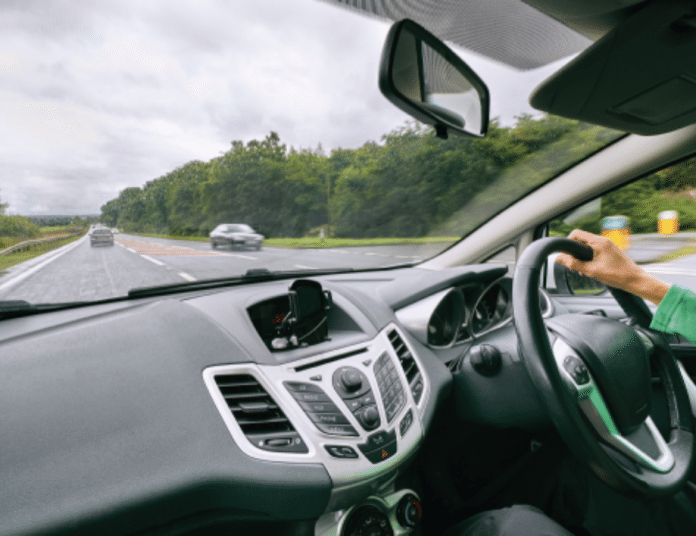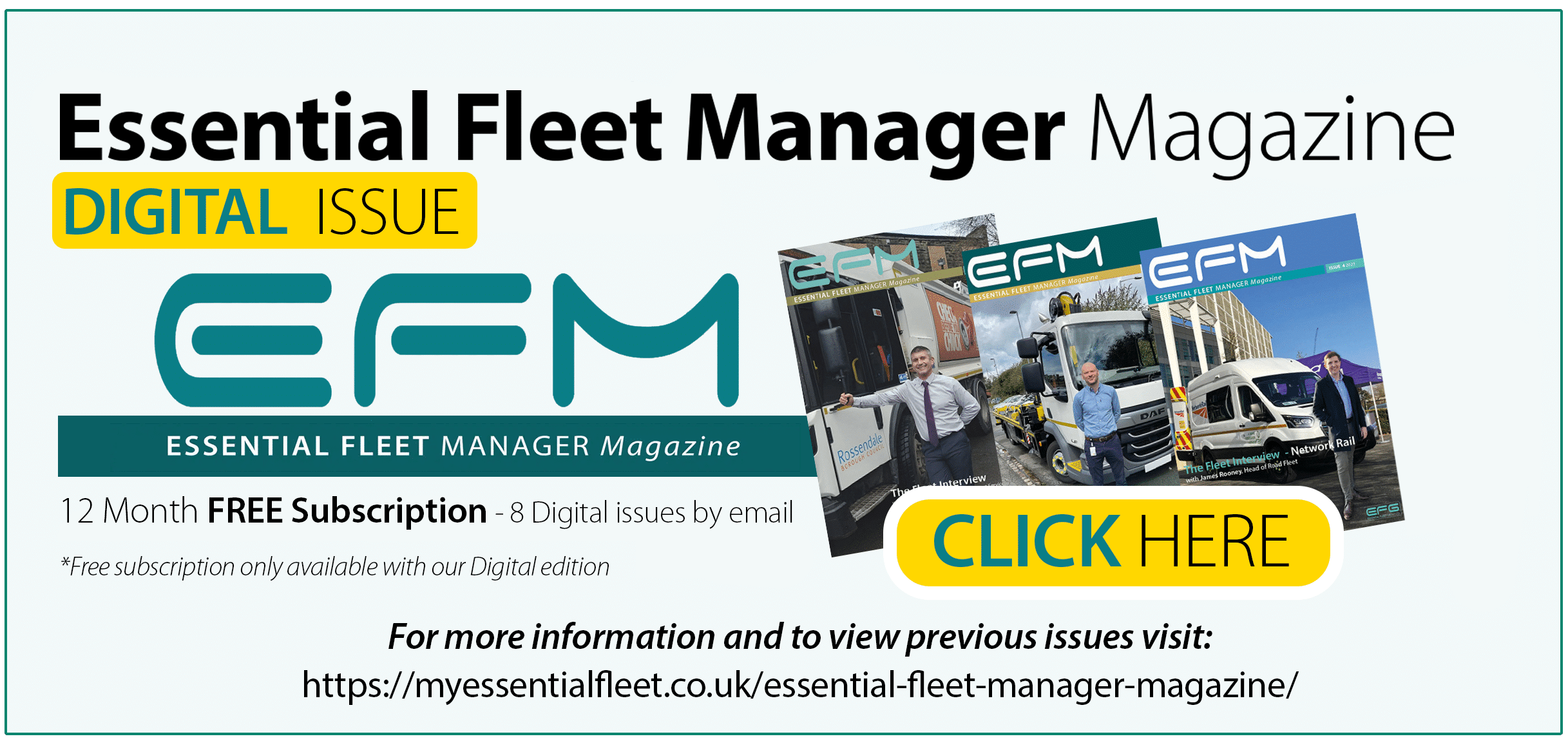By: Deborah Cheadle, Publisher, Essential Fleet Group Ltd.
Introduction
As a fleet or transport manager, you have the responsibility of managing your organisation’s fleet, which includes managing its activity, ensuring compliance, and overseeing the drivers.
In this special guide, we will be discussing driver management, covering topics that focus on mitigating risks. We will discuss the importance of providing a driver’s handbook, implementing further driver training, and the associated risks with drivers who take their company vehicles home in the evening. We will also be looking at the legal aspects related to drug driving, looking after driver well-being, and discussing how to stay up-to-date with compliance issues surrounding driver licence checking. Additionally, we have feature articles that look at the safety of lone workers and that provide safe driving advice.
Overall, managing drivers is about minimising risk and maximising compliance in the most cost-effective way possible. Good communication and encouraging a safe driving culture will help with driver well-being, their understanding of what is expected of them, and ultimately driver retention.
The basics – Driver Handbooks
To make sure drivers understand what is expected of them while driving a fleet vehicle, they should be provided with clear instructions outlined in a driver’s handbook. The Health & Safety at Work Act etc 1974, section 7, states that every employee has a duty to “Ensure the health, safety and welfare of themselves and others while at work.” If drivers have full knowledge of the rules and regulations they need to adhere to, they are more likely to comply.
On any given day, statistically, driving is the most dangerous activity an employee can undertake, so it is essential to get things right from the outset. Placing a copy of your organisation’s driver handbook in all your fleet vehicles and making drivers aware of its contents before the first use of the vehicle is ideal.
Ensuring drivers have the correct licence to drive
Routine driving licence checks should be carried out for all drivers who drive at work and should be part of your fleet management policy. Regular licence checking will help protect your organisation from the risk of prosecution or fines and keep our roads safer.
Under The Road Traffic Act 1988, it is an offence for anyone to knowingly drive without a valid licence, or for an employer to permit a driver to drive a company vehicle without one.
Many organisations operate specialist vehicles, so it is vital to ensure drivers have the appropriate licences for the type of vehicles they are required to operate. Regular checks will help to mitigate risks.
Communication
Good communication is the most important aspect of driver management. Without regular communication between drivers and their fleet or transport manager, drivers may feel isolated, especially those who work remotely and spend little time at the depot. Building a ‘team’ like in any other business activity means your drivers will feel included and therefore will ‘care’ about how they perform.
Ultimately, good driver management is about gaining mutual respect and leading by example. If drivers see their fleet or transport manager bending the rules or not listening to them when there is an issue, they are less likely to speak up when it matters.
Refreshing knowledge
All drivers, no matter how competent or experienced, can benefit from regular refreshers on driving safely and changes in legislation or regulations surrounding their driving activity. This may include changes to driver hours legislation, highway code rules, or general updates on what to do in the event of a collision. Setting aside a few hours a month to ensure drivers stay updated will pay dividends. This could be done through in-person meetings or e-learning modules.
Increasing visibility of driver behaviour with telematics
Monitoring driver behaviour is an area that impacts all aspects of fleet management, and its importance cannot be underestimated. The use of telematics and data-led solutions help managers monitor driver behaviour and make informed decisions to improve safety and efficiency.
Offering driver training
Implementing in-house or external driver training programmes for your drivers could reduce your fleet costs by reducing fuel spend, repairs and maintenance costs.
Passing your driving test is for most, a once-in-a-lifetime skill test, but driving is a daily activity where skills change, confidence is lost and complacency can lead to bad habits developing.
Offering regular training, especially to those drivers that your telematic’s data indicates as ‘poor performers’ can help to get driving skills back on track. With driver shortages becoming an increasing problem, retention is uppermost in fleet and transport managers’ minds, so offering further training could be a short-term cost but a long-term gain.
If you are employing a driver who has only ever driven a passenger vehicle for example, but is entitled and required to drive a commercial vehicle, they might need extra training to gain a better insight into the differences in performance, visibility and size of vehicle. You could also decide to offer further training to existing drivers for specialist or larger vehicles they might be required to drive in the future, as part of their career progression within your organisation.
Whatever your requirements many providers can help deliver on-site and off-site training.
Mitigating the risks associated with drivers who take their vehicles home
It’s not uncommon for large fleets to allow or even require drivers to take their work vehicles home at night. This may be due to limited space at the depot or to disperse the van fleet as widely as possible to respond to emergency call-outs, for example. However, this practice adds an element of risk as the fleet manager has limited physical visibility of the vehicle. They rely on the driver or operative to carry out essential pre-use checks and look after the vehicle’s security.
As a fleet or transport manager, you have a legal and financial obligation to ensure that your fleet is safe, efficient, and compliant.
The legislative burden has increased over recent years, and therefore, ‘O’ Licence holders seek solutions that not only assist in meeting requirements but also provide demonstrable proof of compliance.
Although operating the LCV part of a fleet does not require an operator’s licence, the same principles should be applied to your vans to ensure you meet your duty of care requirements. Ensuring your vehicles are compliant and safe to drive is essential. Regimes designed to meet legislative demands should be followed even when the whole fleet is exempt and no ‘O’ Licence is required.
Vehicle pre-use checks and defect reporting are vital for fleet compliance and safety routines. Thorough checks of all vehicles are essential, but for those that do not return to base overnight micro-managing these vehicles is almost impossible for a fleet or transport manager, so there is a heavy reliance on drivers to ensure their vehicles are correctly checked before use each day.
Enabling the driver to carry out these checks and communicate with the fleet department is equally important. First, to confirm that the check has been carried out and second, to report any defects. Defects may need immediate attention or be planned into the fleet’s SMR schedules. Finally, this reporting must be done in a way that records can be kept in a legally compliant way.
CheckedSafe, an award-winning vehicle compliance software, has innovated in this area, founded in 2014 by Gary Hawthorne and business partner Darran Harris.
CheckedSafe has developed products that help fleet operators not only with operator license compliance but also make the management of remote van fleets safer, more efficient, and easier.
The CheckedSafe fit-for-purpose App, not only helps with compliance but was also specifically designed for the effective management of work-related road safety.
Essential Fleet Manager recently spoke to Gary Hawthorne from CheckedSafe about the remote management of van fleets that do not return to base overnight and the associated problems and how the CheckedSafe App can assist with this.
Gary Hawthorne commented: “CheckedSafe replaces the paper-based daily vehicle check by allowing drivers to complete a daily vehicle check via an App on their smartphone.
The App is compatible with both Android and Apple devices and it improves the overall efficiency of the check process. Therefore, no matter where the vehicle or driver is located the App gives the driver remote functionality.”
While some drivers may have driveways to park their vehicles overnight, many do not, and vehicles are left on the street, sometimes out of view of the driver’s home address.
Theft from vehicles is a significant problem, and commercial fleet vehicles can be targeted, especially if someone believes there are high-value tools left in the vehicle overnight. A sticker stating that there are no expensive tools in the vehicle is unlikely to deter the most determined thief. Again, there are expert vehicle security providers who can help to make vehicles as secure as possible and the benefits will far outweigh the initial capital outlay.
Within fleets that have transitioned or are in the process of transitioning to EVs, it can also be challenging to ensure that they have sufficient access to charging. If they can be kept in a driveway then a home charging point is an obvious solution.
However, if a driver lives in rented accommodation they may not have the authority to install a charge point and may have to use on-street parking and rely on public charging points.
Managing charging costs presents further challenges, but there are many organisations offering solutions to handle both infrastructure access and charging expenses.
Managing the Health and well-being of your drivers
Ensuring the safety and well-being of drivers should be a top priority for all fleet and transport managers and this includes taking measures to maintain their physical and mental health.
Companies need to recognise the impact of stress and fatigue on their drivers and the associated risks.
Drivers who spend most of their working hours on the road are at a higher risk of developing lifestyle-related health problems.
Long hours of sitting, lack of exercise, and isolation, are all factors that can have a significant impact on both mental and physical well-being, which could ultimately reduce a driver’s ability to drive safely.
Organisations need to monitor their drivers and encourage them to report any medical condition that could affect their driving. However, stress and fatigue can be difficult to identify and address. A more focused approach is required to improve health and mental well-being.
Absenteeism and driver turnover can directly impact fleet performance, so it is important to understand drivers and look for signs of anything that could be affecting their life and work. Employing people is not just about paying a wage; it requires a more holistic approach.
Sleep deprivation is a significant factor that increases the health and safety risks associated with driving. Regular and good quality sleep is essential, as it rebalances the immune and endocrine systems.
Many collisions caused by drivers can be linked to fatigue. Research indicates that driving tired is as dangerous as driving under the influence of alcohol.
Fatigue limits people’s ability to learn and accurately interpret events. It can also affect perception, memory, attention, and response times, all of which are essential while driving.
Warning signs of sleep deprivation include increased difficulty in concentrating, yawning, and neck muscles relaxing, causing the head to droop. Micro-sleep can occur when someone sleeps for two to thirty seconds without realising or remembering. This often happens when people are trying to stay awake and can occur especially in monotonous road environments. Lack of driver stimulation can be a contributory factor.
Organisations can take several measures to support their drivers and reduce the risk of accidents. They can have an open-door policy for drivers and take the time to talk to them, not just about work. They can also build a social support structure to help drivers maintain their mental well-being. Encouraging drivers to eat a healthier diet, providing water bottles, subsidising exercise equipment, and implementing safe driving programs and incentives are other measures that can be taken.
Investing time and effort in supporting and getting to know drivers will help organisations create a better working environment and reduce their exposure to risk.
Mental health issues such as depression can also affect judgement and decision-making, which can be dangerous when driving. Having regular contact with drivers in person is therefore vital to make sure you can understand any issues that could develop or that could be addressed with a friendly chat.
No one expects fleet and transport managers to be experts in all aspects of mental health, but unfortunately, it is not uncommon, and it is something all managers should be aware of.
Identify the activities that cause distracted driving
There are many known causes of distracted driving that all drivers are required by law to avoid. The most obvious of these is perhaps hand-held mobile phone use. However, there are many common activities that whilst perfectly legal are still highly distracting and best avoided. For example, eating and drinking whilst driving can be severely distracting.
Many of today’s vehicles come with driver assistance features that can be useful but also highly distracting. For instance, when using satellite navigation, it is recommended to enter the destination information before setting off to avoid the need for manipulating controls while driving. Even while using satellite navigation, drivers should still pay attention to road signs. This will help them stay focused on the road and confirm the information and guidance provided.
As a general rule, anything that takes a hand off the steering wheel or eyes off the road, even for a second, can be considered distracting. Hence, it is essential to ensure that drivers are aware of the potential of such activities and act accordingly. The best way to achieve this is through regular communication with your team and providing ‘top-up’ training, where appropriate.
Drink / Drug related driver penalties
If one of your drivers is caught driving under the influence of alcohol, the consequences can be severe. Depending on the severity of the offence and the decision of the magistrates hearing their case, they may face imprisonment, a driving ban, and a fine.
If they opt to take a drink-drive rehabilitation scheme (DDRS) course, there is the possibility of reducing their driving ban. However, whether or not this option is available to them will be decided by the court.During an investigation into a possible drink driving related offence, the police may require a driver to provide two specimens of breath for analysis or a specimen of blood or urine for a laboratory test.
If the driver refuses to provide a specimen for analysis without reasonable excuse, they will be guilty of an offence.
Below are some of the penalties associated with different drink-driving offences:
Being in charge of a vehicle while above the legal limit or unfit through drink:
• A fine of up to £2,500
• Possible driving ban
• Imprisonment of up to three months
Driving or attempting to drive while above the legal limit or unfit through drink:
• An unlimited fine
• Driving ban for at least one year (three years if convicted twice in 10 years)
• Imprisonment of up to six months
Causing death by careless driving when under the influence of drink:
• An unlimited fine
• Driving ban for at least five years
• Life imprisonment
• An extended driving test before the driver’s licence is returned
Please note: If the driver is a high-risk offender, they will not automatically get their licence back.
A drink-driving conviction can also result in significantly increased car insurance costs.
If drivers are caught driving while under the influence of drugs, they could face the same severe penalties. These include a minimum one year driving ban, an unlimited fine, up to 6 months in prison, and a criminal record. A driver’s licence will also display a drug driving conviction for 11 years.
In addition to these penalties, if a driver causes death by careless driving while under the influence of drugs, they could receive a life sentence.
A drug-driving conviction as with a drunk driving conviction can also lead to increased car insurance costs, difficulty in travelling to certain countries like the USA.




